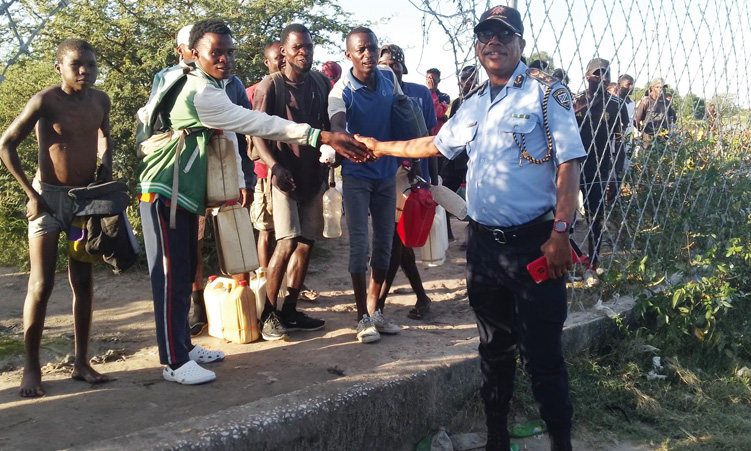SWAKOPMUND’S beaches became a display of various marine creatures – some seldom seen – due to a red tide that broke out over the weekend.
Although the phenomenon is nothing new, it did attract a lot of attention this time around because of the large variety of creatures that surfaced and washed out onto the beaches. These included shrimp, sole, sharks, eels, octopuses, crabs and crayfish.The creatures were docile due to a lack of oxygen and people could swim along with them without startling them.Eventually they washed up on the beach to die and provide an exotic meal for seagulls.Usually during a red tide, hundreds of people gather at the low-water mark and collect bags full of crayfish, which would otherwise not be so easy to get.”The sea’s stretching out its hand to us and giving us food,” one man told The Namibian.Another said: “This is just the ocean’s way of cleaning out its bowels.”The variety of creatures was a source of fun and excitement to many children playing at the Mole.A red tide is caused when a large mass of plankton dies in the deep sea and is washed towards the shore, giving the water surface a brown-red colour and a distinctive smell.The dead plankton absorbs large quantities of oxygen from the water, which cases marine animals to suffocate.These included shrimp, sole, sharks, eels, octopuses, crabs and crayfish.The creatures were docile due to a lack of oxygen and people could swim along with them without startling them.Eventually they washed up on the beach to die and provide an exotic meal for seagulls.Usually during a red tide, hundreds of people gather at the low-water mark and collect bags full of crayfish, which would otherwise not be so easy to get.”The sea’s stretching out its hand to us and giving us food,” one man told The Namibian.Another said: “This is just the ocean’s way of cleaning out its bowels.”The variety of creatures was a source of fun and excitement to many children playing at the Mole.A red tide is caused when a large mass of plankton dies in the deep sea and is washed towards the shore, giving the water surface a brown-red colour and a distinctive smell.The dead plankton absorbs large quantities of oxygen from the water, which cases marine animals to suffocate.
Stay informed with The Namibian – your source for credible journalism. Get in-depth reporting and opinions for
only N$85 a month. Invest in journalism, invest in democracy –
Subscribe Now!










